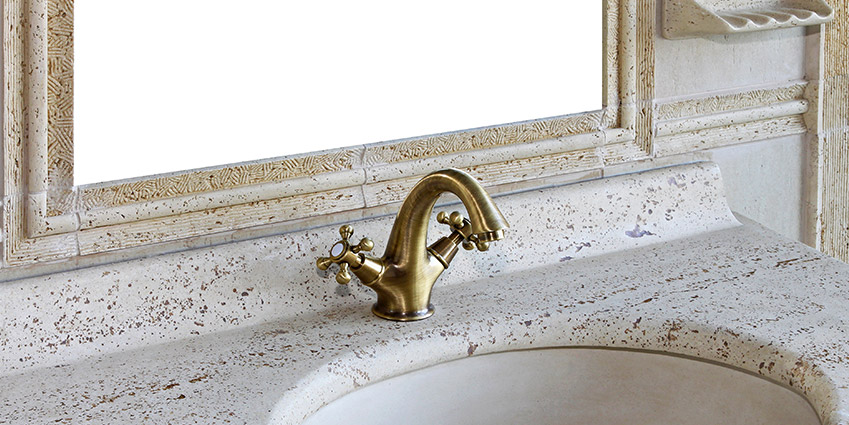When it comes to remodeling your bathroom, the faucets you pick out are like bling for your sink. They are a necessary accessory but that does not mean you have to go with the cheapest, plainest faucet on the market. You can find a faucet that suits the décor and style of the room while meeting the needs of everyone who uses the space without breaking your budget.
Faucets for your bathroom sink are the crown jewels of a bathroom remodeling job. They not only come in a wide range of styles and shapes, but also in finishes. You are no longer limited to plain chrome faucets like the ones your parents and grandparents used. Before you rush out and invest in a new faucet for your family’s bathroom, there are a few things you will have to consider first.
For example, will you use your existing sink or does your bathroom remodeling project include investing in a new sink? This could affect where the faucet openings are located and if your current model does not line up to those holes then you could find yourself buying a new faucet out of necessity.
You will also want to consider the types of faucets used in the area where you live. Choosing faucets that are too trendy could be a major turn off for potential buyers should you ever want to put your home on the market. This is especially important to remember if you are remodeling with the intention of increasing the value of your home for the expressed purpose of reselling.
The Many Types of Bathroom Faucets
Even then, there are so many faucet types to consider, whether you are retrofitting a newly purchased faucet to the sink you already have, or buying an entire ensemble that includes a new sink. Either way, you have to match the type of faucet to the openings that are within the sink for your bathroom vanity cabinet, pedestal, or wall mount ensemble. These faucet types include:
- SINGLE-HOLE FAUCETS – These faucets have a single lever attached to the spout. It only requires a single hole to be drilled into the sink. Sometimes there is a bottom plate to cover former three-hole openings in the case of where you are retrofitting during a bathroom remodeling project. This sink is most often found in smaller spaces, such as a powder room bathroom tucked under a stairway in the hall.
- CENTER SET FAUCETS – This type of faucet either has one lever or two handles that are all mounted on a six-inch plate. They fit the standard three-hole sink, with the measurement of the outer holes being drilled four inches apart. Most bathroom sinks can accommodate the center-set faucet making it an ideal choice for all types of bathroom renovations.
- WIDESPREAD MOUNT FAUCETS – These types of faucets have three individual pieces that work together to deliver water to your bathroom sink. The handles measure a distance of eight inches apart, if not wider, and the two handles and the faucet are a bit larger on the average than other models and types of faucets for a bathroom sink. You can find these for holes drilled four inches apart, but those are called mini-spreads, and they are just a smaller version the widespread mount faucet.
- WALL MOUNT FAUCETS – This type of faucet is gaining in popularity, especially with all the new freestanding sinks that are available across the market. Vessel-type sinks require faucets that have a longer spout to extend well over the side of the bowl, which makes wall mount faucets the perfect choice to pair up with this type of sink.
Saving Water with New Bathroom Faucets
If your family is like most others, then you care about the environment and want to take steps to, whenever possible, conserve the natural resources the earth provides. One way to do this is by choosing eco-friendly products during a home renovation, such as a bathroom remodeling job. There are some types of faucets, for example, that can help you save water whenever you use them.
These faucets contain a feature called an aerator which helps save well over ten thousand gallons of water per year based on how much an average family of four people use a bathroom faucet every day of the year. Although the stream puts out about thirty percent less water than a standard faucet, the aerated water coming from the spout is no less powerful than the stream that comes out of a faucet that lacks the same water saving features.


